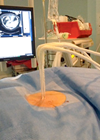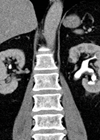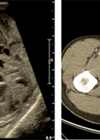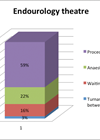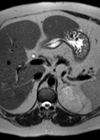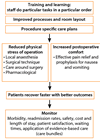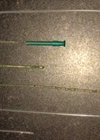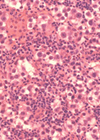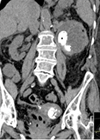Features archive for 2014
Image-guided renal cryoablation
Introduction There has undoubtedly been a dramatic increase in the number of patients diagnosed with small renal masses in recent years [1]. The rapidly expanding use of CT has led to a large number of incidental diagnoses, but increasing longevity...
Use of bone windows in urological CT
Introduction Unenhanced computed tomography of kidneys, ureter and bladder (CTKUB) is the recommended gold standard investigation in patients with acute renal colic. CT urography is now a commonly used technique in the investigation of haematuria, for surgical planning and for...
Management of stage 1 non-seminomatous germ cell tumours
Testicular cancer (TC) is the most successfully treated solid tumour, achieving a cure rate of 90-95% [1-3]. Testicular cancer is relatively rare with an incidence of 2207 cases in the UK in 2014 [4] and yet is the most common...
Theatre utilisation in urology theatres at a UK tertiary referral centre
Introduction The efficient use of operating theatres is important to ensure optimum cost-benefit for the hospital and to clear waiting lists. The key elements in the efficient use of operating theatres are: effective management and good communication, trained staff, appropriate...
All you need to know about percutaneous nephrolithotomy: supine versus prone and mini versus traditional
Introduction Since the first percutaneous nephrolithotomy (PCNL), the technique has undergone many innovations, including modifications in positioning, miniaturisation of instruments and combination with retrograde intra-renal surgery (see Table 1 for an outline of the history of the technique). Controversy has...
Assessment of the incidental adrenal lesion
Introduction The adrenal glands are seen on CT or MRI surrounded by fat in the peri-renal space. The right adrenal gland lies medial to the right lobe of the liver, lateral to the right crus of the diaphragm and superior...
The role of an enhanced recovery protocol in patients undergoing robotic radical cystectomy
Enhanced recovery after surgery (ERAS) protocols are patient pathways designed to reduce surgical stress and accelerate postoperative recovery. Uptake of such protocols in colorectal surgery in particular has been high, however ERAS protocols developed or utilised in urological surgery have...
Complications of CISC
Introduction Clean intermittent self catheterisation (CISC) was first introduced and popularised by Lapides in 1972. Since then its utilisation has become widespread and it is now commonly used throughout the world as the preferred means of facilitating complete and effective...
Testicular cancer: management of stage I seminoma
Introduction Testicular cancer is the most frequently occurring solid tumour in men between the ages of 15 and 34 years [1]. About 60% of cases are seminomas and approximately 70-80% of them have, at presentation, clinical stage I disease. This...
Nurse practitioner TRUS biopsy: training and preparation
As prostate cancer rates increase, many urology departments rely on multi-professional teams to diagnose and manage patients with prostate cancer. The aim of this article is to highlight the skills, training and preparation required for nurse practitioners to undertake trans-rectal...
The NICE Guideline on Urinary Incontinence: the management of urinary incontinence in women
Background Urinary incontinence (UI) is a common symptom that can affect women of all ages. It is difficult to estimate the prevalence of UI since it is often under-reported, although the Norwegian EPINCONT study looking at women over 20 reported...
Emphysematous pyelonephritis: a review
Introduction Emphysematous pyelonephritis (EPN) is an acute, severe, necrotising, bacterial infection of the renal parenchyma and surrounding tissues, with gas in the renal parenchyma, collecting system or perinephric tissue. Although it is rare, it is potentially life threatening and early...

